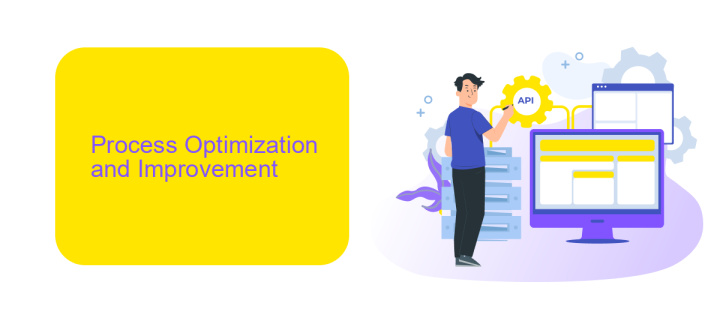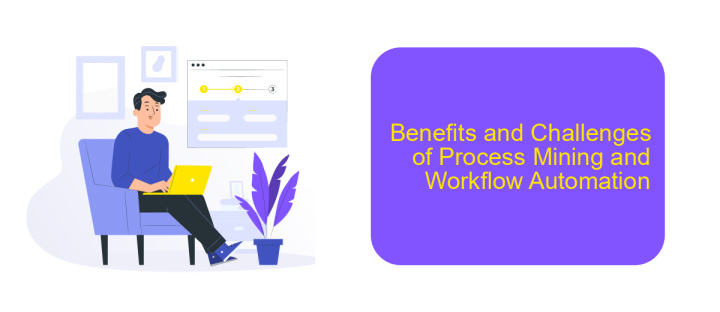Process Mining and Workflow Automation
Process mining and workflow automation are revolutionizing the way businesses operate by providing deep insights into their processes and streamlining operations. By leveraging advanced data analytics and automation technologies, organizations can uncover inefficiencies, optimize workflows, and enhance overall productivity. This article explores the fundamentals of process mining and workflow automation, their benefits, and how they are transforming modern enterprises.
Process Discovery and Analysis
Process discovery and analysis play a pivotal role in understanding and optimizing business workflows. By leveraging advanced techniques, organizations can identify inefficiencies, bottlenecks, and opportunities for improvement in their processes. This foundational step is essential for successful workflow automation, ensuring that the automated processes are both efficient and effective.
- Identify key processes and map them comprehensively.
- Analyze process performance using data-driven insights.
- Detect and address bottlenecks and inefficiencies.
- Utilize tools like ApiX-Drive for seamless integration and automation.
Using services like ApiX-Drive can significantly enhance the process discovery and analysis phase by enabling easy integration of various systems and data sources. This facilitates a more holistic view of the processes, allowing for more accurate analysis and more effective automation strategies. Ultimately, thorough process discovery and analysis lay the groundwork for continuous improvement and operational excellence.
Process Optimization and Improvement

Process optimization and improvement are crucial for enhancing the efficiency and effectiveness of business operations. By leveraging process mining techniques, organizations can gain valuable insights into their workflows, identify bottlenecks, and uncover opportunities for streamlining processes. This data-driven approach allows for continuous monitoring and refinement, ensuring that processes evolve to meet the changing needs of the business environment. Moreover, integrating automation tools can significantly reduce manual intervention, minimize errors, and accelerate task completion, thereby fostering a more agile and responsive organizational structure.
One of the key aspects of process optimization is the seamless integration of various systems and applications. Services like ApiX-Drive facilitate this by enabling the easy connection and automation of workflows between different platforms. By utilizing ApiX-Drive, businesses can automate data transfers, synchronize information across systems, and ensure that all parts of the workflow are harmoniously aligned. This not only enhances operational efficiency but also provides a scalable solution for managing complex processes, ultimately leading to improved productivity and better resource utilization.
Workflow Automation

Workflow automation is a crucial aspect of modern business operations, aimed at streamlining and optimizing repetitive tasks. By automating workflows, organizations can significantly reduce manual effort, minimize errors, and enhance overall productivity. This process involves the use of various tools and technologies to create, manage, and execute workflows without human intervention.
- Identify repetitive tasks and processes that can be automated.
- Select appropriate automation tools and platforms, such as ApiX-Drive, which facilitates seamless integration between various applications and services.
- Design and configure the automated workflows, ensuring they align with business objectives.
- Test the workflows to ensure they function correctly and make necessary adjustments.
- Monitor and maintain the automated workflows to ensure they continue to operate efficiently.
Implementing workflow automation not only saves time and resources but also enables businesses to focus on more strategic activities. Tools like ApiX-Drive play a pivotal role in this process by providing easy integration solutions, allowing different systems to communicate effortlessly. As a result, companies can achieve greater efficiency and adaptability in their operations.
Benefits and Challenges of Process Mining and Workflow Automation

Process mining and workflow automation offer substantial benefits to organizations, including enhanced efficiency, reduced operational costs, and improved compliance. By analyzing existing processes, businesses can identify bottlenecks and inefficiencies, enabling them to streamline workflows and boost productivity. Automation further minimizes manual intervention, reducing errors and freeing up employees to focus on more strategic tasks.
Despite these advantages, implementing process mining and workflow automation comes with its own set of challenges. Organizations often face difficulties in data integration, as well as resistance from employees who fear job displacement. Additionally, the initial setup and maintenance of automated systems can be resource-intensive.
- Increased operational efficiency
- Cost reduction
- Improved compliance
- Employee productivity
To overcome these challenges, companies can leverage integration services like ApiX-Drive, which simplifies the connection between various software systems, ensuring seamless data flow. By addressing data integration issues and providing training to employees, organizations can successfully implement process mining and workflow automation to achieve their business goals.
Case Studies and Best Practices
In a notable case study, a financial services company utilized process mining to enhance their loan approval workflow. By analyzing historical data, they identified bottlenecks and inefficiencies in their process. Implementing workflow automation, they reduced the approval time by 40%, leading to increased customer satisfaction and operational efficiency. The integration of ApiX-Drive facilitated seamless data transfer between their CRM and loan processing systems, ensuring real-time updates and reducing manual errors.
Another example comes from a healthcare provider aiming to streamline patient appointment scheduling. Using process mining, they discovered that manual scheduling was causing significant delays. By adopting workflow automation, they managed to automate appointment bookings and reminders. This not only improved patient experience but also optimized staff utilization. The integration capabilities of ApiX-Drive enabled the synchronization of patient data across various platforms, ensuring a cohesive and efficient workflow.


FAQ
What is Process Mining?
How does Workflow Automation benefit businesses?
What are the key steps involved in implementing Process Mining?
Can Process Mining and Workflow Automation be integrated?
What tools can help with the integration and automation of workflows?
Apix-Drive is a simple and efficient system connector that will help you automate routine tasks and optimize business processes. You can save time and money, direct these resources to more important purposes. Test ApiX-Drive and make sure that this tool will relieve your employees and after 5 minutes of settings your business will start working faster.

